For centuries, the foods we eat are often categorized as healthy or unhealthy. What may be a supreme health food today, may not have been so great a few years ago, and depending on who you ask, certain foods can benefit our diets or lead to serious health risks. While many diets offered today – whether keto, low-carb, low-fat, high-fat, vegan, or gluten-free – pose no immediate health risks, there are certain foods that we should always avoid.
Many foods only pose a health risk if you are allergic to them. Several healthy foods with high-fat contents, like avocados, nuts, and seeds are typically beneficial to your diet. However, others should be universally avoided. These are the foods that can not only pose serious health risks but may even cause death. These foods contain toxins, are prone to bacteria, or have physical properties that make them hazardous if not prepared properly.
To compile a list of foods that pose serious health risks or even death, 24/7 Tempo reviewed articles on the subject from websites of The World Health Organization, The Canadian Institute of Food Safety, The University of Melbourne Scientific Scribbles, and WebMD. Most of the items listed can be consumed safely if they’re properly prepared or you eat the right parts of them. Certain foods would have to be consumed in large quantities to experience any ill effects, while others might be more problematic. These bites are typically so obscure that you would need to venture to far-off locales to experience them, like Iceland’s beloved hákarl, or fermented shark. (These are vegetables you should never eat raw.)
But no other food is perhaps as dangerous as fugu or blowfish. It contains lethal toxins in its organs and can only be prepared safely by licensed fugu chefs. Another deadly toxic bite is the death-cap mushroom, which the name alone should warn you. All parts of this fungi are poisonous and even a tiny nibble can have severe effects. Some other items may not seem as serious, like bay leaves, but be forewarned, this aromatic leaf is only intended for flavoring, and if consumed, especially whole, can puncture the digestive tract. (These restaurant foods are most likely to cause food poisoning.)
Like all foods, even those deemed bad, caution, proper handling, and preparation are key. By knowing which foods are dangerous, how to prepare them carefully by avoiding the toxic parts, or making sure they are prepared by someone familiar with them, you can ensure a healthier – and safer – dining experience.
Here are foods that pose serious health risks or even death:
Ackee

- Principal danger: Hypoglycin alkaloid toxins
- Native to: Tropical West Africa
Ackee (scientific name is Blighia sapida) was brought to Jamaica by Captain William Bligh of “Mutiny on the Bounty” fame and is now considered its national fruit. When fully ripened and cooked properly, ackee is safe to eat – but the unripe fruit contains poisonous hypoglycin, which can cause convulsions and even death. Even if it’s cooked, unripe ackee can be deadly — as can the water it’s cooked in.
Barracuda
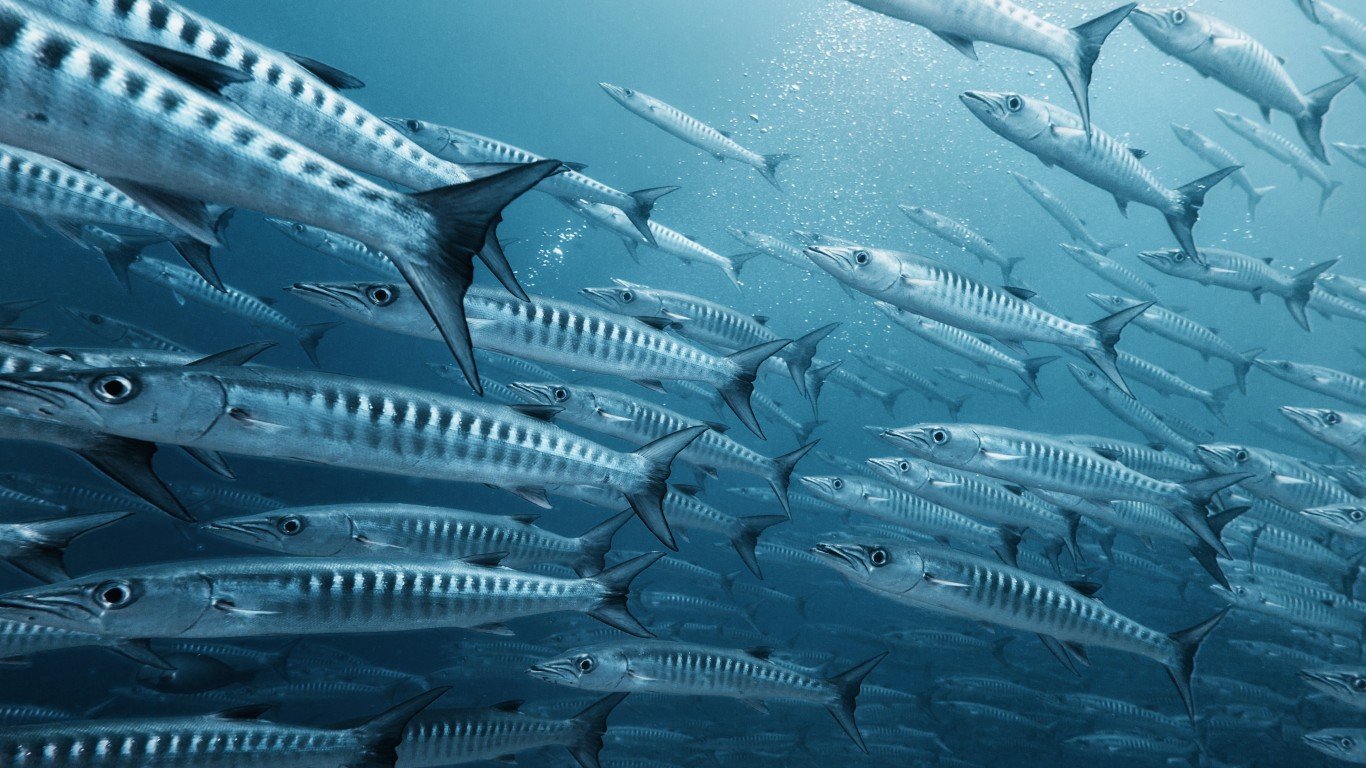
- Principal danger: Ciguatoxin
- Native to: Tropical and subtropical seas
In Florida, barracuda is a popular fish to catch and eat but make sure you only use the smaller fish; any that are more than about three-and-a-half feet in length may contain a concentration of ciguatoxin, which can cause a wide variety of symptoms including numbness and nausea and can affect heart rhythm and body temperature.
Bay leaves
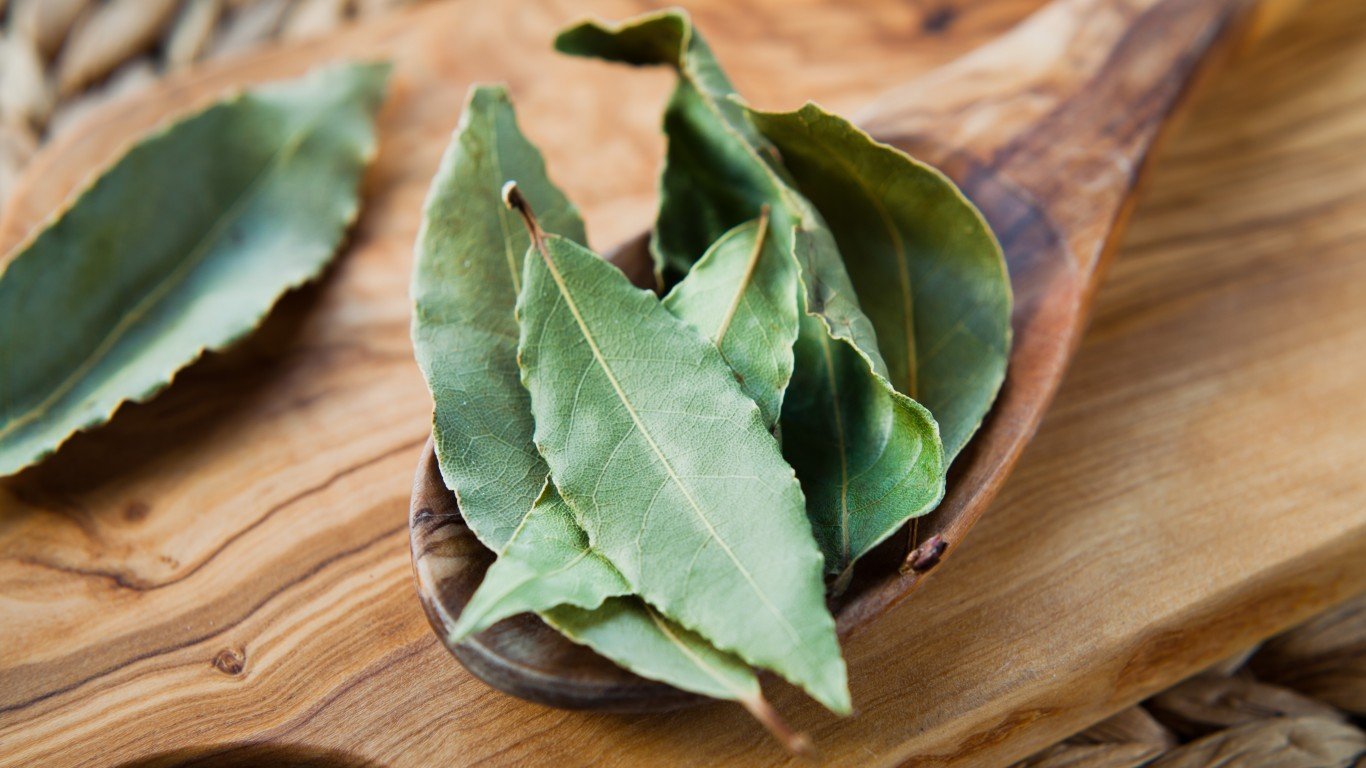
- Principal danger: Sharp edges
- Native to: the Mediterranean Region
We have all eaten pasta with red sauce and may have even seen a bay leaf floating around during preparation but it is generally removed before serving. This is because they can be injurious to internal organs if consumed. Although the essential oils in bay leaves add flavor and aren’t toxic to humans, their jagged edges make them harmful to swallow.
Cassava
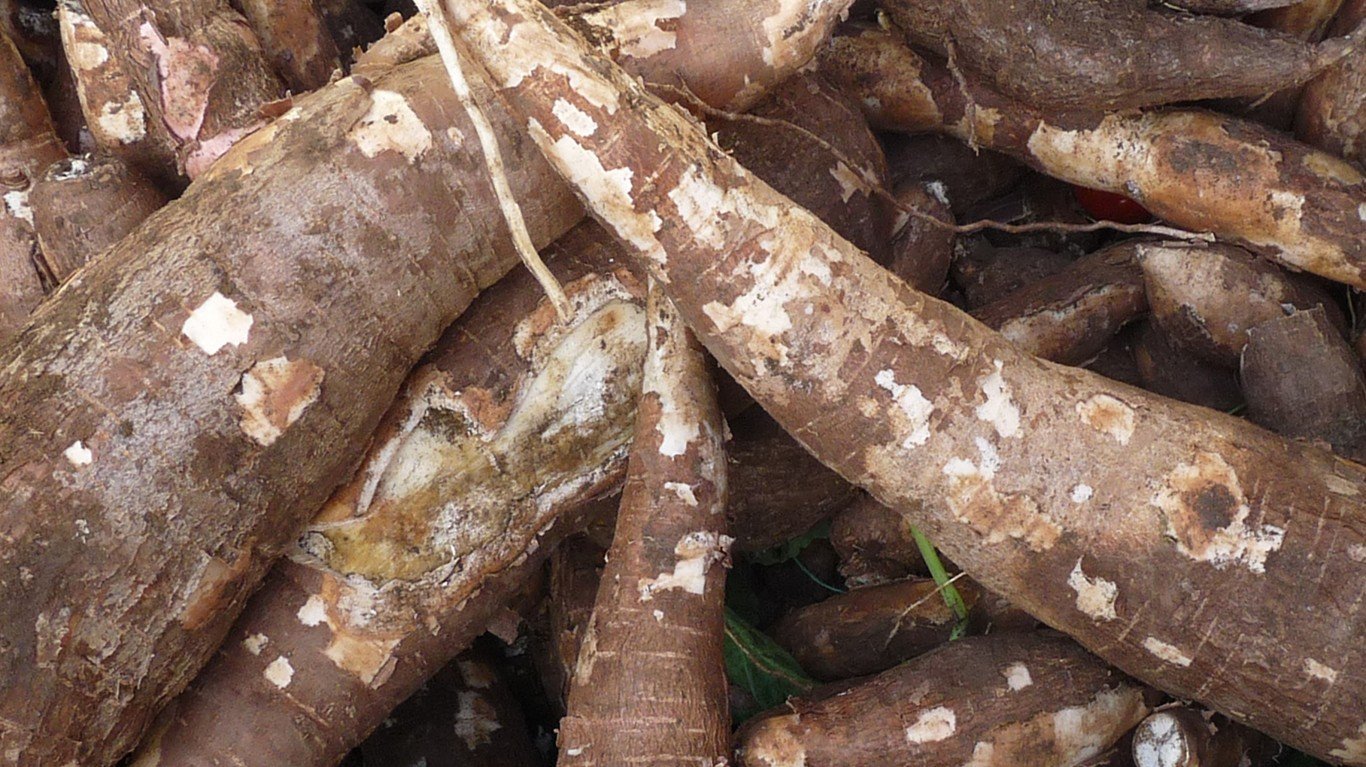
- Principal danger: Cyanogenic glucosides, releasing hydrogen cyanide
- Native to: South America
Before cassava can be consumed, certain steps must be taken. This edible tuberous root is typically ground into flour, but because it contains cyanogenic glucosides, it must be detoxified by soaking, drying, and scraping before being eaten to prevent potentially fatal cyanide poisoning.
Casu marzu
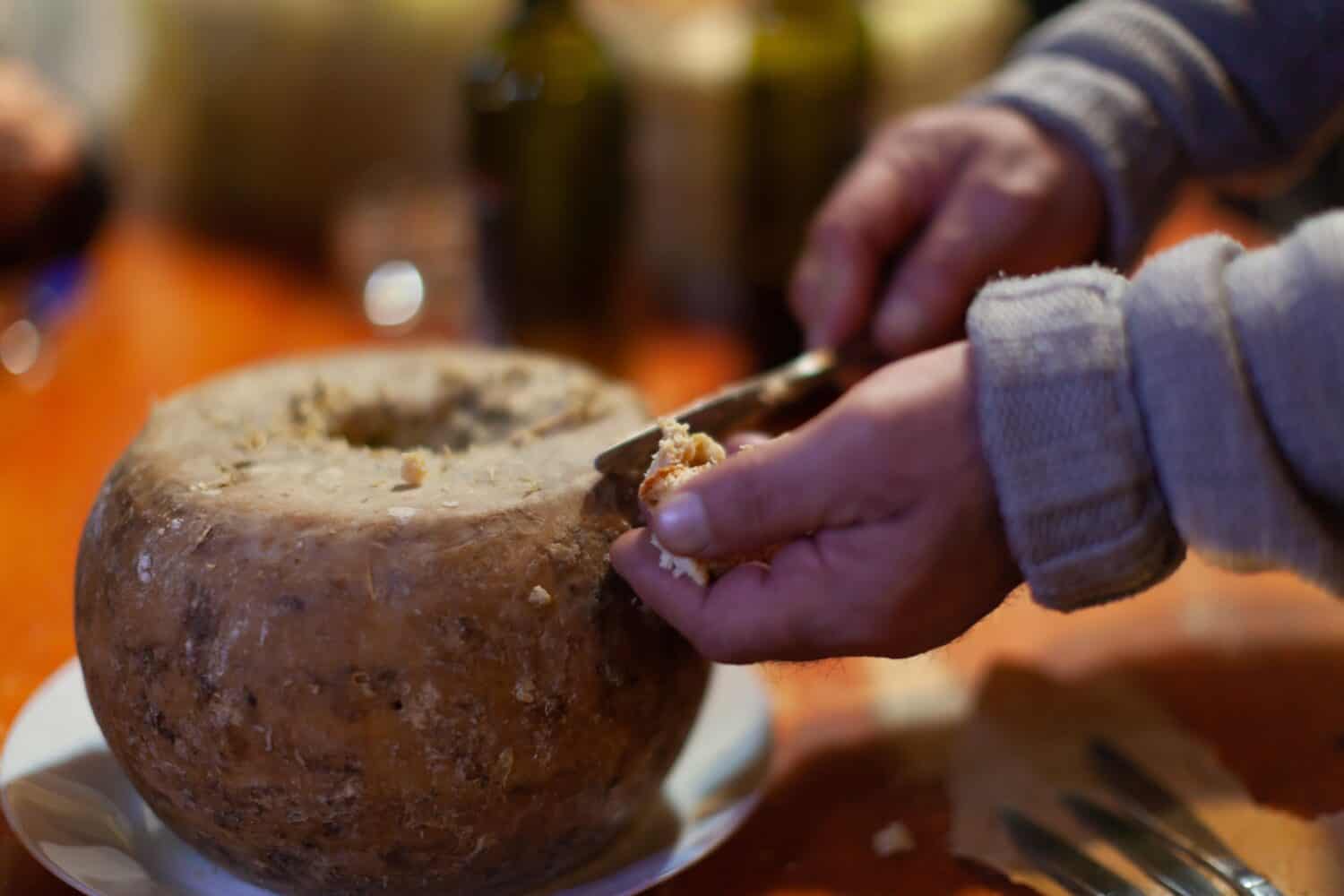
- Principal danger: Live maggots
- Native to: Sardinia
While we all may love cheese, certain kinds, like casu marzu may not be to everyone’s taste. Loved by the locals, this cheese was once touted as the “world’s most dangerous” because it’s filled with live maggots, which digest the milk proteins turning the cheese creamy and soft. However, ingesting any maggots could result in myiasis, tiny holes in the intestine caused by maggot bites.
Cherry pits
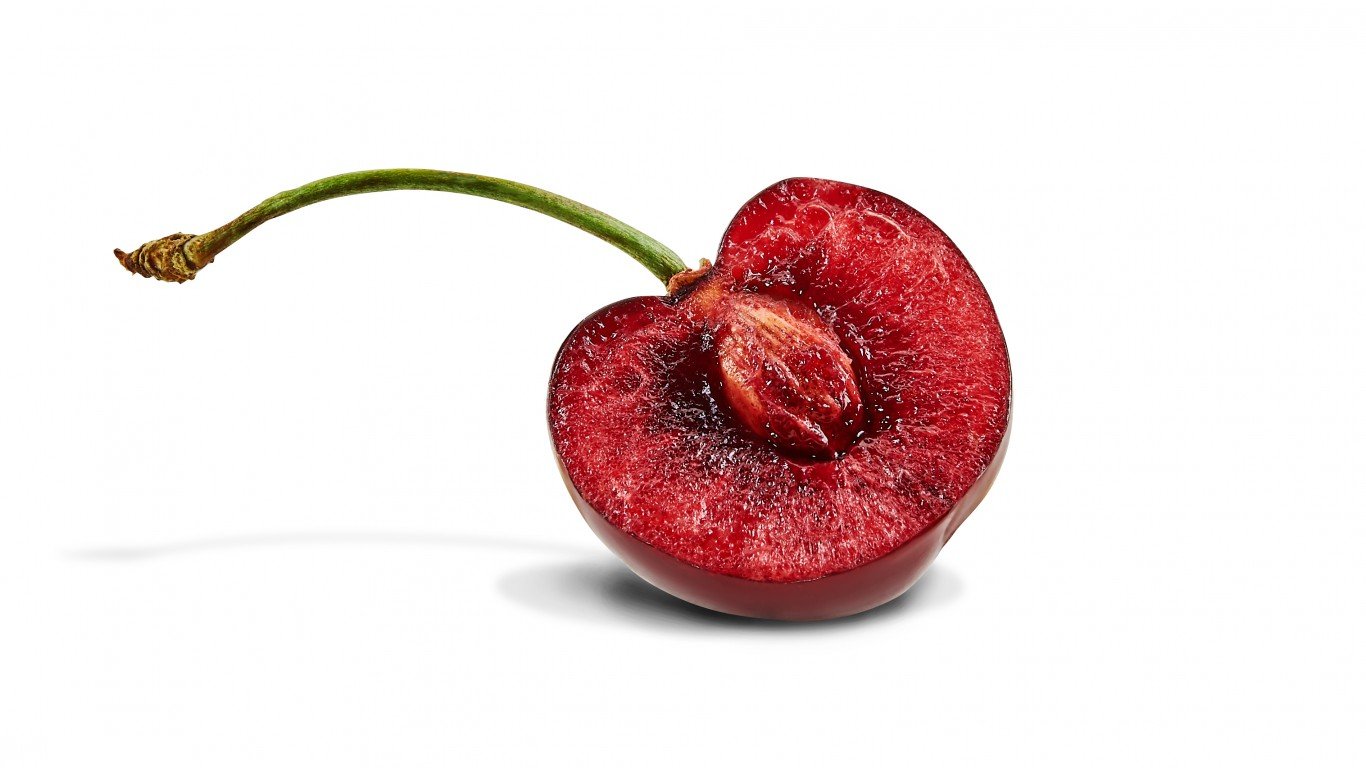
- Principal danger: Hydrogen cyanide
- Native to: Western Asia/Eastern Europe
The sweet, fleshy part of a cherry is perfectly fine to eat – and incredibly delicious. However, the hard pit contains cyanide (also known as prussic acid) and if consumed, the cyanide can lead to unconsciousness and death. But don’t worry if you swallow a whole pit, it will pass through your digestive system harmlessly. It will only cause harm if you eat broken-up bits of the cherry pit.
Cinnamon

- Principal danger: Choking hazard, scarring of lungs
- Native to: Sri Lanka, the Malabar Coast of India, and Myanmar
There are four main types of cinnamon – cassia, Ceylon, Saigon, and Korintje. The type most common in the United States is the dark-colored cassia cinnamon. Cinnamon is popular in many desserts and beverages and small amounts won’t cause any harm. Should you consume large quantities of cassia cinnamon, it may be toxic especially if you have liver problems because some cinnamon products contain coumarin, a common ingredient in rat poison.
Death-cap mushrooms (Amanita phalloides)
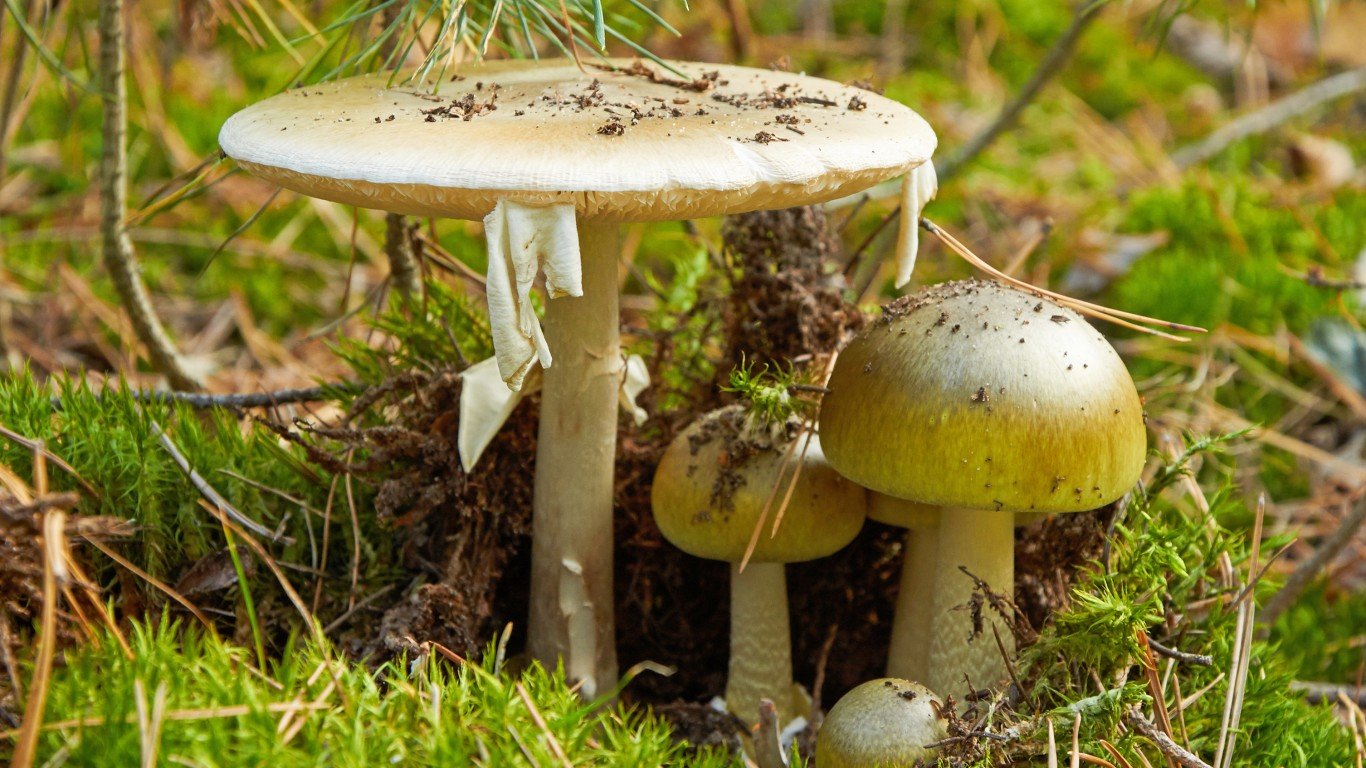
- Principal danger: Amatoxins, phallotoxins, virotoxins
- Native to: Europe
Mushrooms have more than 14,000 species but only 3,000 are edible (and people only eat around 200 varieties). One of the most deadly types with a fitting name is the death-cap mushroom, which has an incredibly potent poison and is so well-known that it’s been implicated in the deaths of such famous figures as the Roman emperor Claudius, Pope Clement VII, the Russian tsaritsa Natalia Naryshkina, and Holy Roman Emperor Charles V. Even a tiny amount can be fatal.
Elderberry leaves and seeds
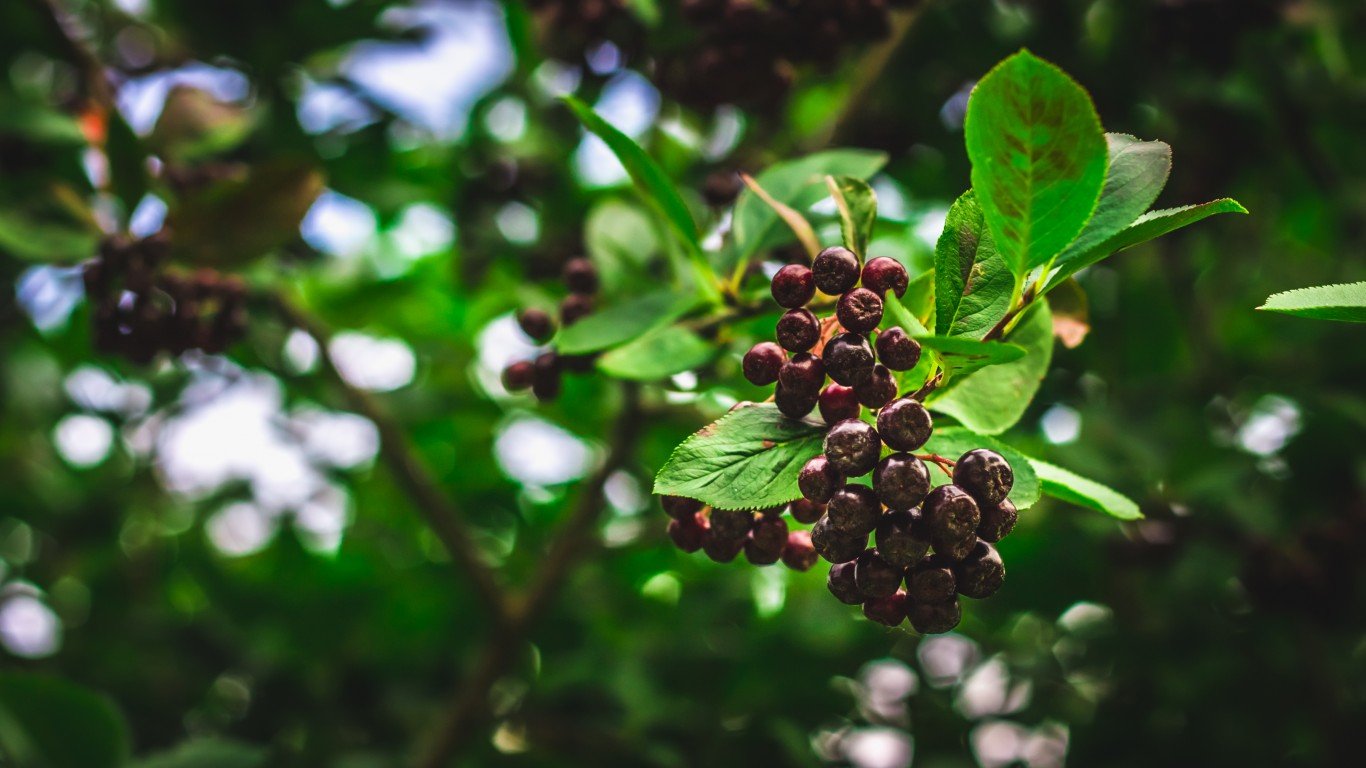
- Principal danger: Cyanogenic glucosides
- Native to: North and South America, Europe, Asia, and the South Pacific
Elderberries are packed with antioxidants and nutrients. Touted for its medicinal purposes, the elderberry is packed with antioxidants and nutrients. However, the bark, leaves, seeds, and unripened berries of the plant contain cyanogenic glycosides, which can cause nausea, diarrhea, and overall weakness, among other problems.
Fugu (blowfish)

- Principal danger: Tetrodotoxin
- Native to: Northwest Pacific
The inner organs of Fugu, or blowfish, contain tetrodotoxin, a poison that paralyzes the victim until he or she can no longer breathe, resulting in death. The flesh of the fish is considered a great delicacy, however, and it is often served in high-end sushi bars. In Japan and a few other countries, only chefs with three or more years of training are legally permitted to prepare the fish.
Green or sprouted potatoes
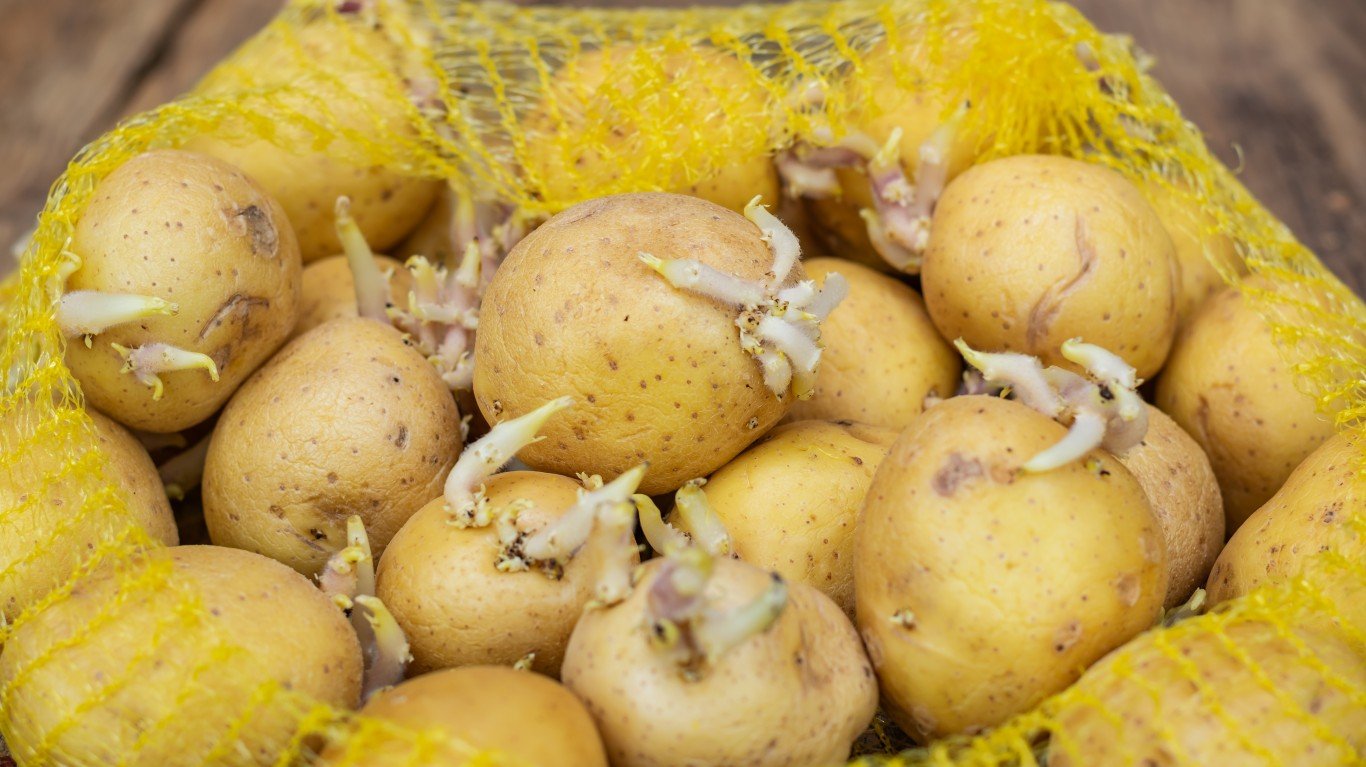
- Principal danger: Solanine, glycoalkaloids
- Native to: Peruvian-Bolivian Andes
Potatoes develop a toxin called solanine as they age, which turns them bitter and can lead to nausea and sometimes serious neurological problems. Other naturally occurring toxins in potatoes, called glycoalkaloids, grow strongest in the sprouts and eyes. Glycoalkaloids can be particularly problematic for infants and young children, but even in adults can cause acute gastrointestinal problems.
Hákarl (fermented shark meat)
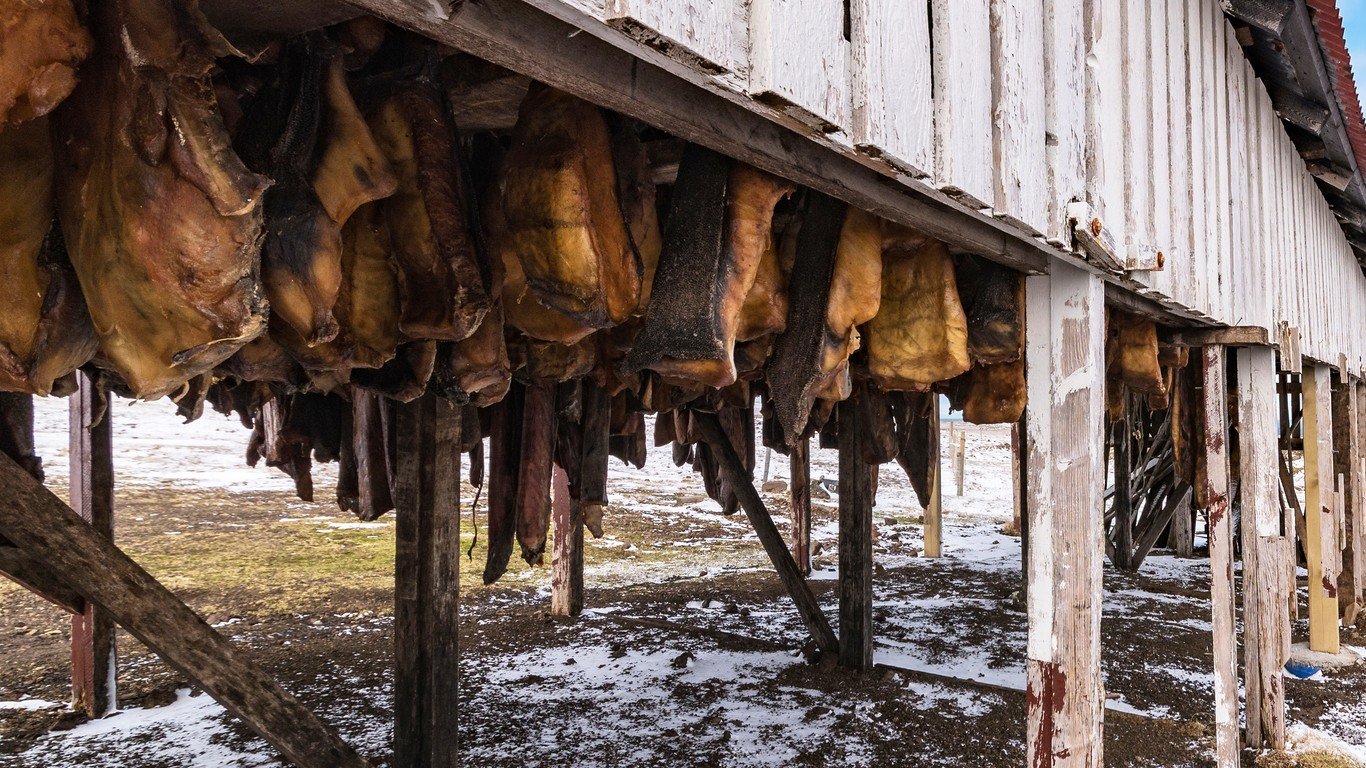
- Principal danger: Urea, trimethylamine oxide
- Native to: Iceland
Hákarl is the meat of the Greenland shark and is traditionally prepared by burying it in sand to ferment for months, then air-drying it. The meat can be poisonous if eaten raw because the fish itself contains high quantities of urea and trimethylamine oxide (which can induce severe cardiovascular problems). The preparation process technically renders the shark harmless but it acquires such a pungent ammoniated smell that non-Icelanders usually find it impossible to eat.
Hot dogs
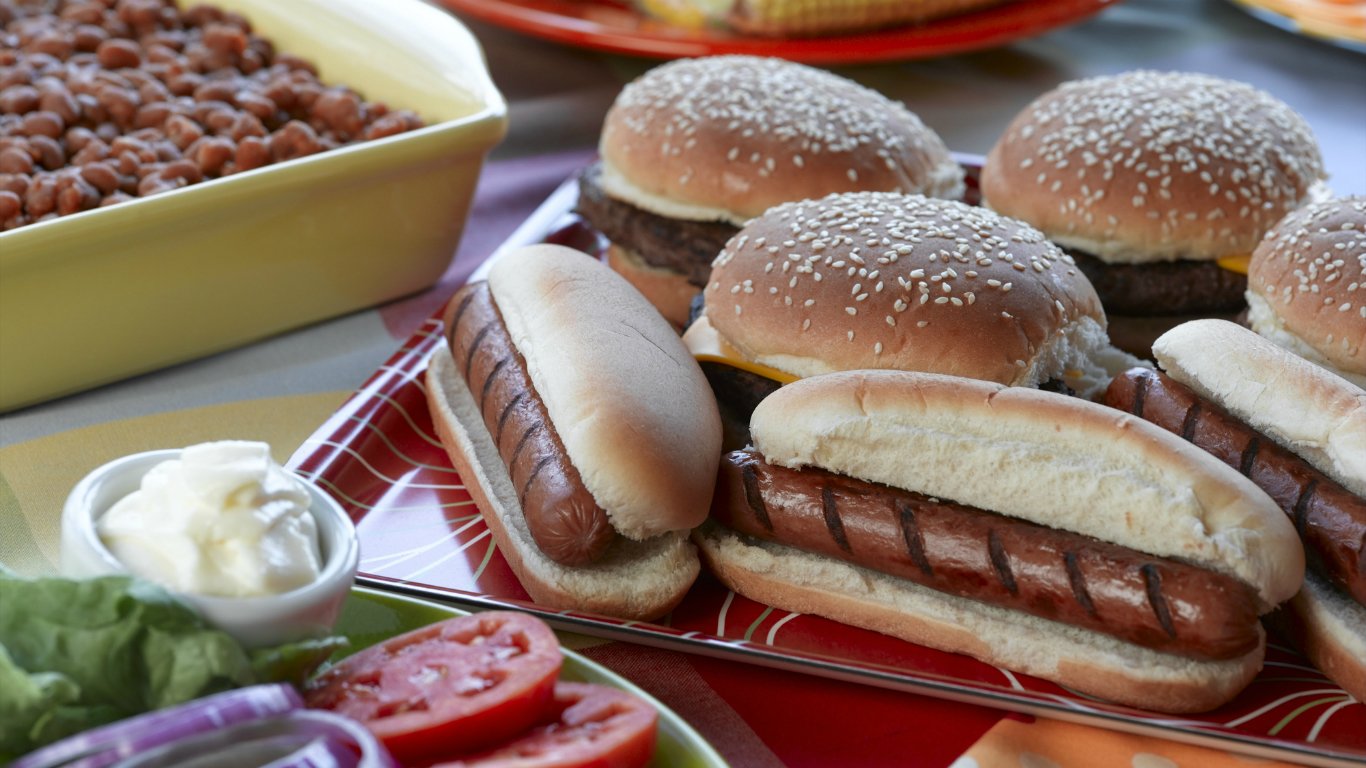
- Principal danger: Choking hazard
- Native to: Germany
Besides being packed with sodium (up to 600 grams in one dog) and potentially carcinogenic additives, these barbecue staples are arguably the most dangerous, due to their size and texture, which can be a potential choking hazard, especially for children.
Lychees
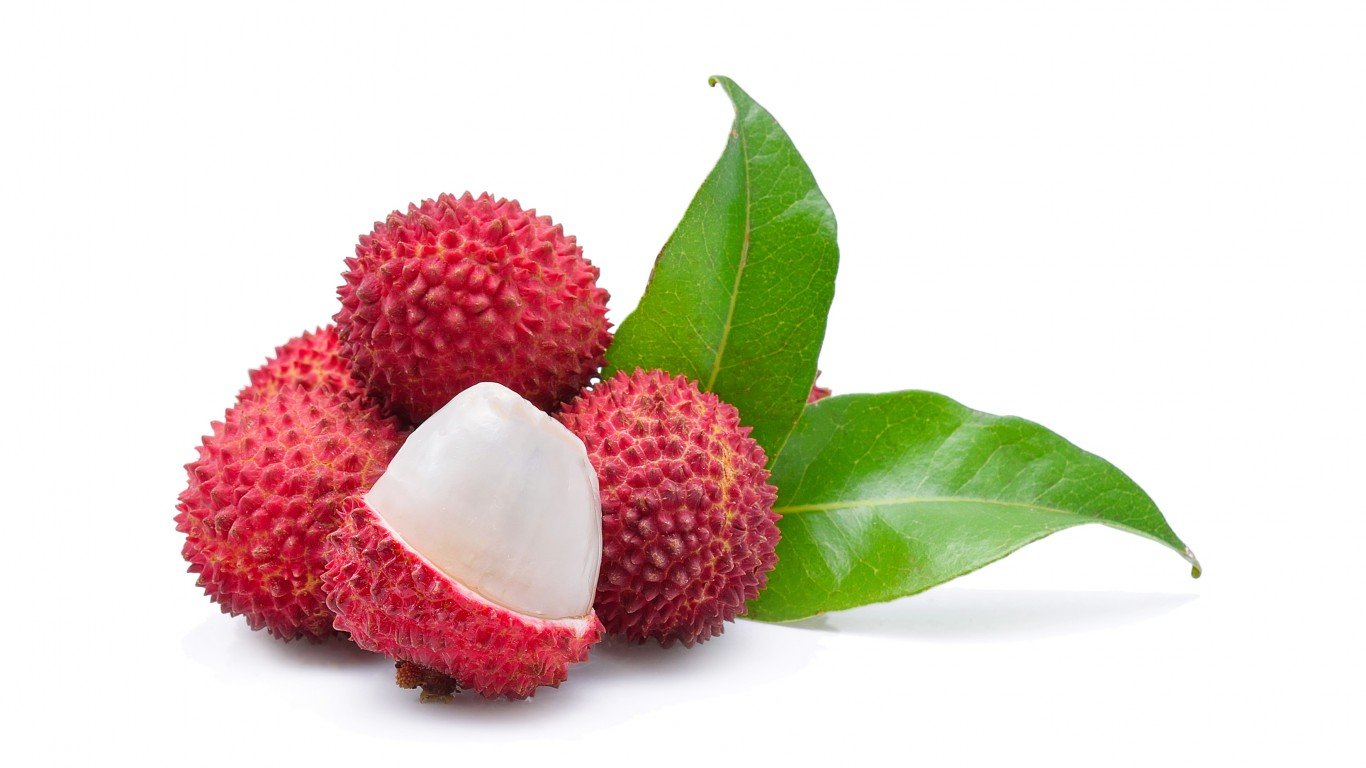
- Principal danger: Hypoglycin A, methylene-cyclopropyl-glycine
- Native to: South China
Covered by a pinkish-colored skin, the lychee is peeled and its sweet, white flesh is then eaten. They aren’t harmful when consumed in small amounts, but the lychee fruit has reportedly been the cause of brain inflammation cases in Southeast Asia. Scientists aren’t sure why that happens, but it may be due to the presence of the toxin hypoglycin A.
Peanut butter
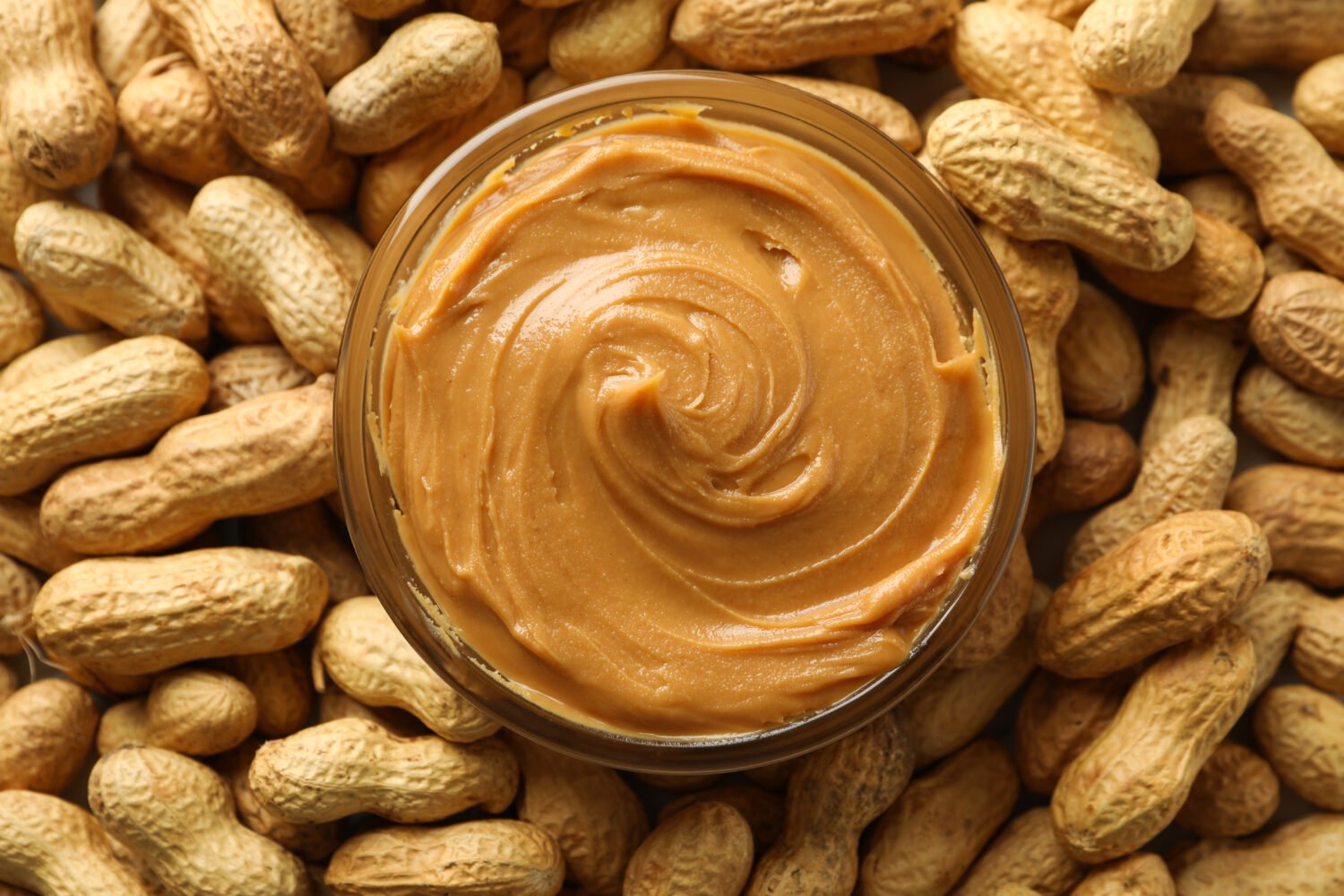
- Principal danger: Choking hazard
- Native to: South America
Peanut butter was once a staple of lunchtime but has come under fire in recent years due to many children who suffer from allergies to these legumes (no, they aren’t nuts). But allergy issues aren’t what brings it to this list – according to the American Academy of Pediatrics, peanut butter is one of the most dangerous choking hazards for children. Although every kid loves it, the thick, sticky substance can be hard for very young children to swallow. Even adults are sometimes advised not to eat spoonfuls straight from the jar for similar reasons.
Peanuts
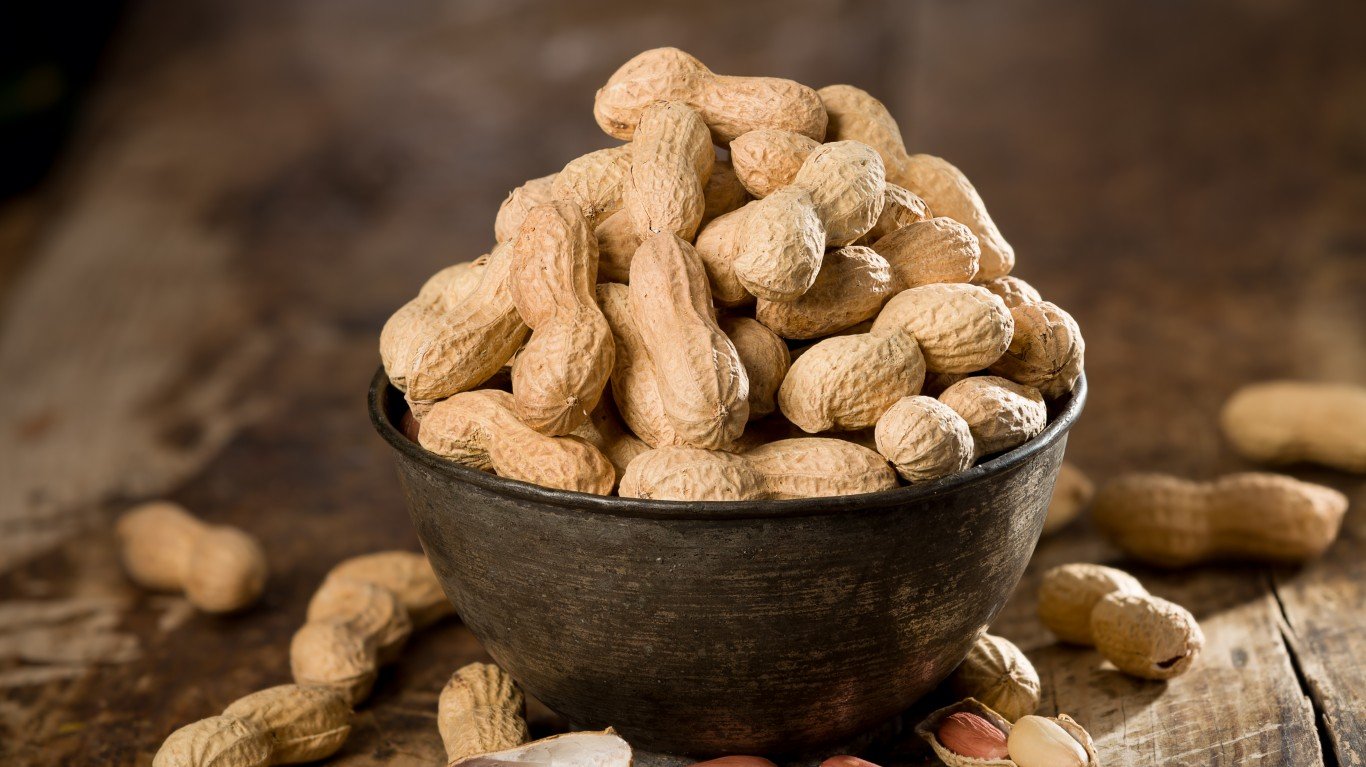
- Principal danger: Aflatoxins
- Native to: South America
Peanuts are often touted as healthy as they are a good source of vitamins, protein, and fiber, and are also high in “good fats” which can help lower cholesterol. Unfortunately, they can also develop aflatoxins, which is caused by a type of fungus known as Aspergillus. Aflatoxins are carcinogenic in themselves but are also the trigger for extremely serious allergic reactions, especially in children, leading to death if not treated immediately.
Raw cashews
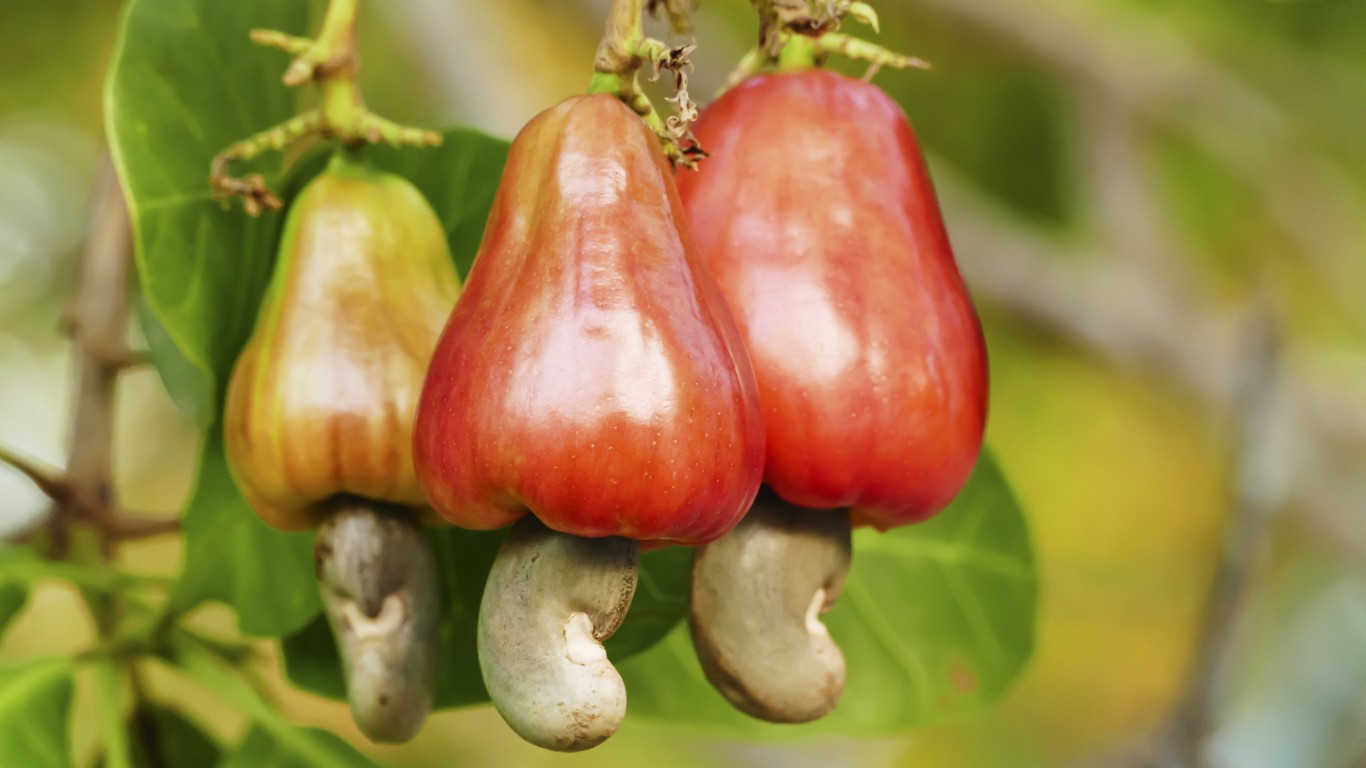
- Principal danger: Urushiol
- Native to: Brazil
There’s a difference between raw cashews you purchase in markets and actual raw cashews. Those nuts bought in stores are safe to eat because the nuts have been steamed to remove the toxins. Raw cashews that haven’t gone through this process still contain urushiol, a substance found in poison ivy. However, even store-bought cashews can be potentially dangers to the small percentage of people that have a severe allergic reaction to the nuts, similar to that more commonly linked to peanuts and just as potentially dangerous.
Raw honey
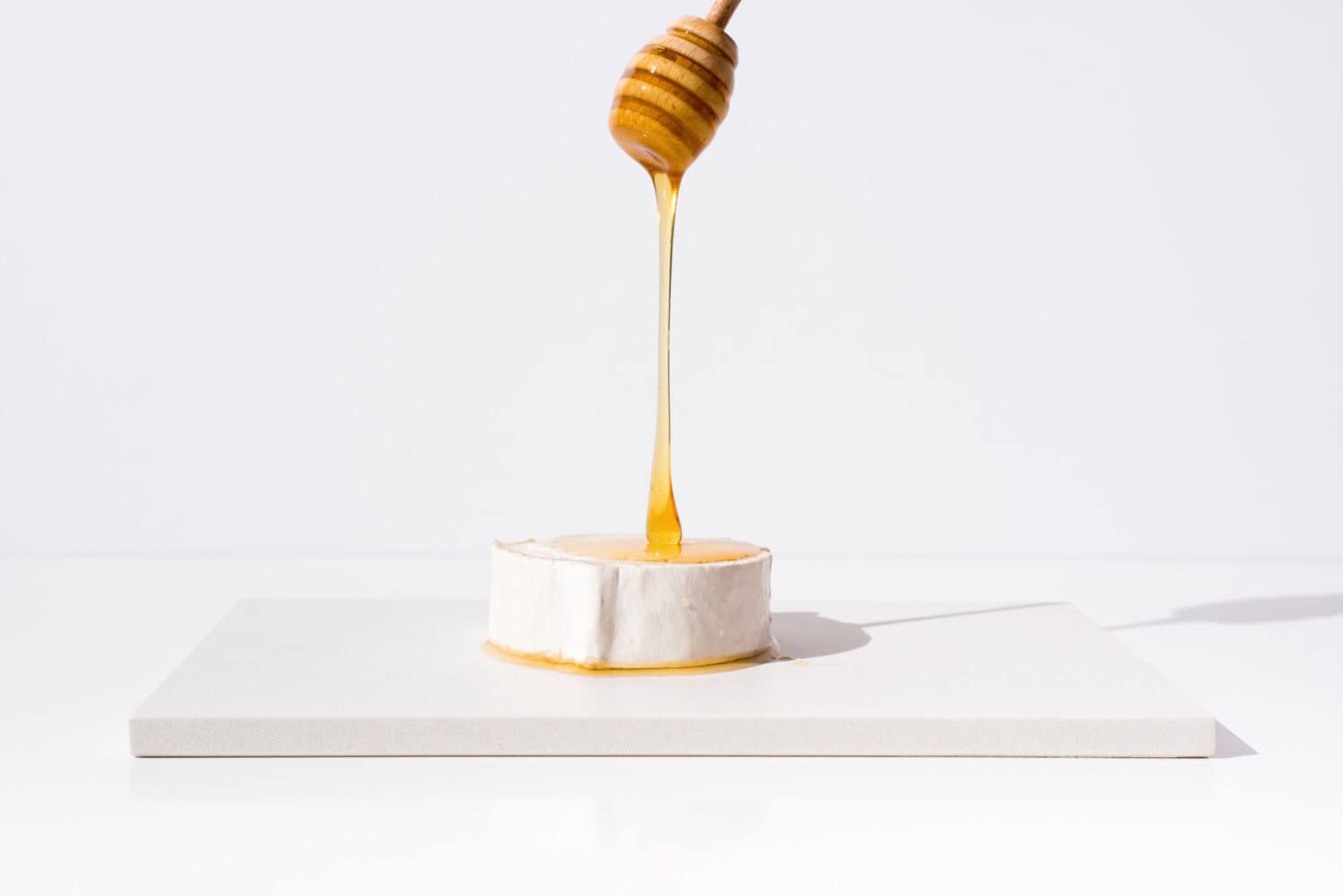
- Principal danger: Clostridium botulinum, pyrrolizidine alkaloids
- Native to: Europe, Africa, and parts of Asia (honey bees, which produce this golden nectar, come from these areas)
Raw honey is not typically a hazard for most adults but to people of a certain age, it can be especially dangerous. The syrupy substance can contain spores of a bacterium that could cause botulism poisoning. Signs of an adverse reaction include nausea, vomiting, and diarrhea. Adults and older children can fight off the bacteria, but babies cannot. Compounds called pyrrolizidine alkaloids may cause symptoms of illness in some adults, as well, and a small segment of the population is allergic to bee pollen and may get sick from honey.
Rhubarb leaves
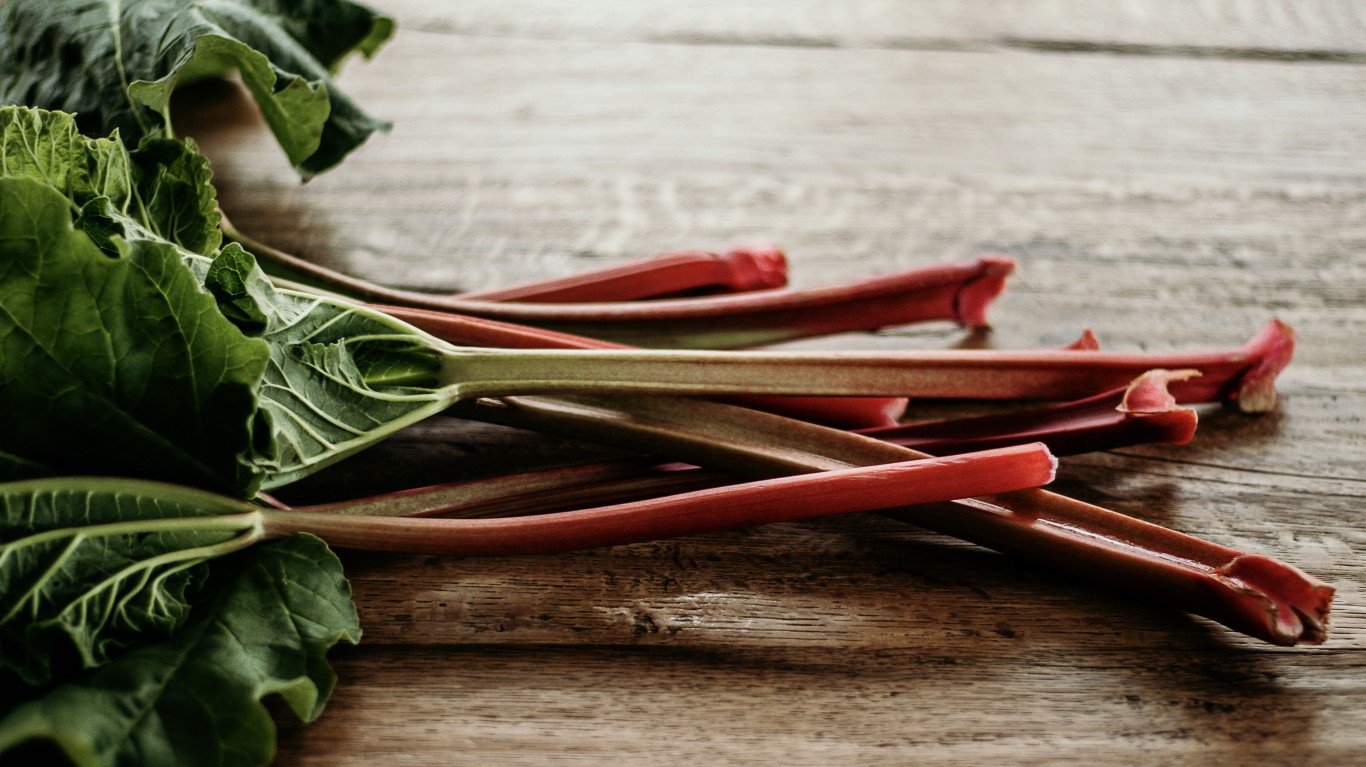
- Principal danger: Oxalic acid
- Native to: Northern Asia
Just like the cherry, certain parts of the rhubarb plant are perfectly safe to eat, but other parts are highly toxic. The stalks are extremely edible – and safe – and feature prominently in pies, with or without strawberries, in the spring. However, the leaves are another story. Because of the high concentration of oxalic acid, which can cause diarrhea and vomiting and lead to more serious conditions, the leaves are completely inedible.
Starfruit
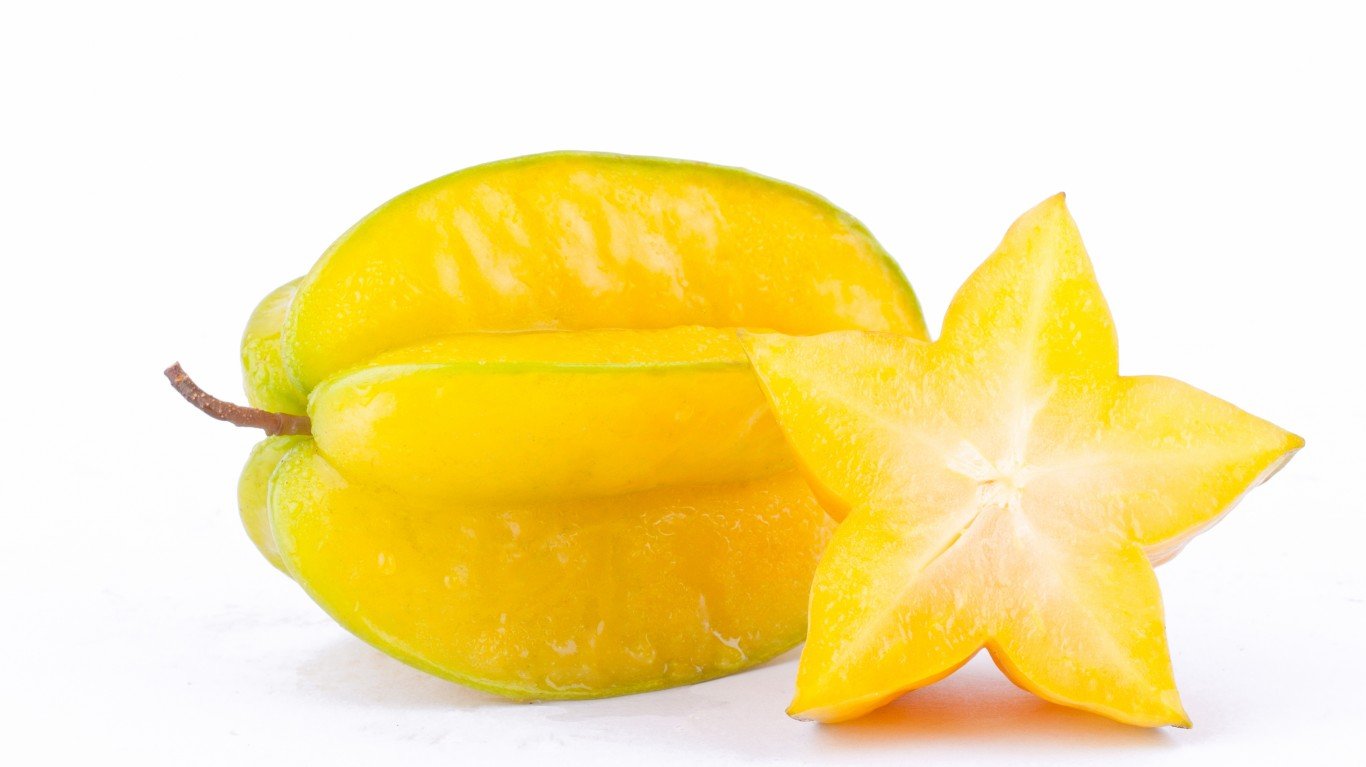
- Principal danger: Caramboxin
- Native to: Sri Lanka, the Moluccas, India and Indonesia
Also known as bilimbi, carambola, and five-finger, this star-shaped fruit contains a high concentration of oxalate. While the majority of people can consume it safely, for others, those suffering from kidney disease, it could cause further damage and may interfere with the absorption of some prescription medicines.
Stinging nettles
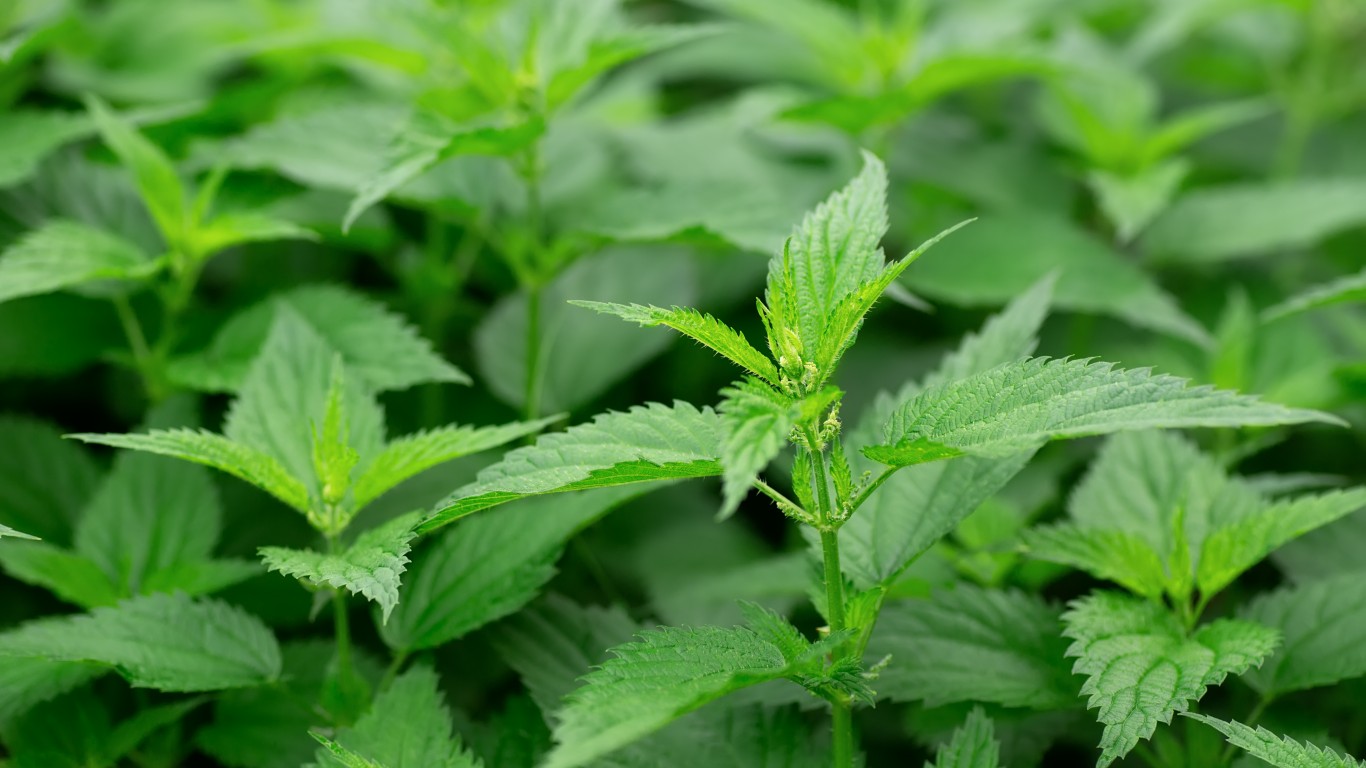
- Principal danger: Formic acid, sharp spines
- Native to: Asia, Europe, North and South Americas
Stinging nettles are considered a springtime health food in some cultures and when cooked or dried, are generally considered safe but the leaves are another story. Due to their content of formic acid and other substances, the leaves can cause an allergic reaction on the skin and the spines can cut the hands.
Undercooked chicken
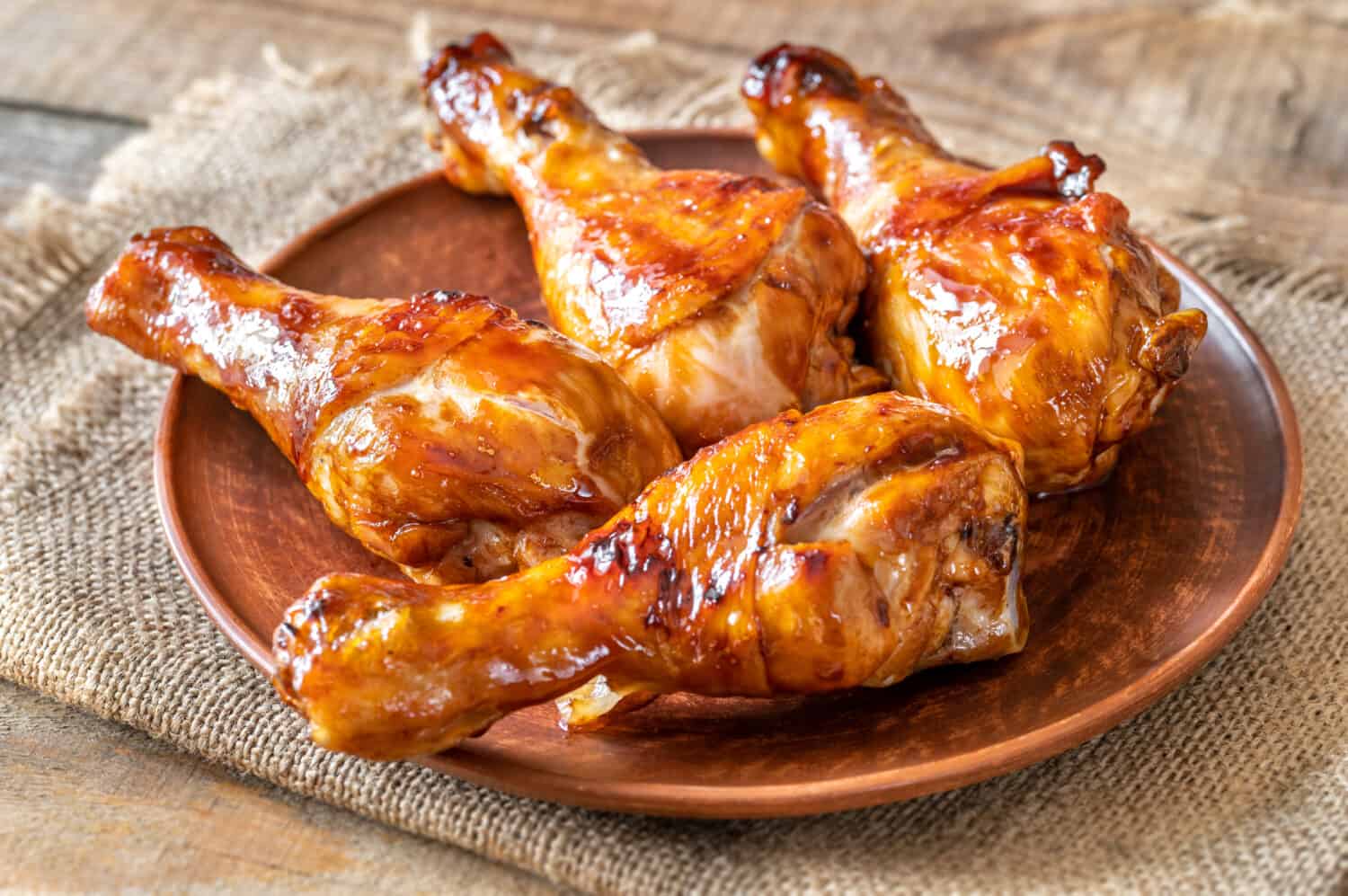
- Principal danger: Bacteria including campylobacter and Salmonella
- Native to: Southeast Asia
Undercooked chicken may contain harmful bacteria, such as salmonella, which can be fatal. The Centers for Disease Control & Prevention estimates that about a million people get sick from eating contaminated poultry every year. To prevent contamination or illness, cook chicken to an internal temperature of 165° F, wash your hands after preparing the meat, and clean any poultry juices from your utensils, plate, or cutting board.
Undercooked lima beans
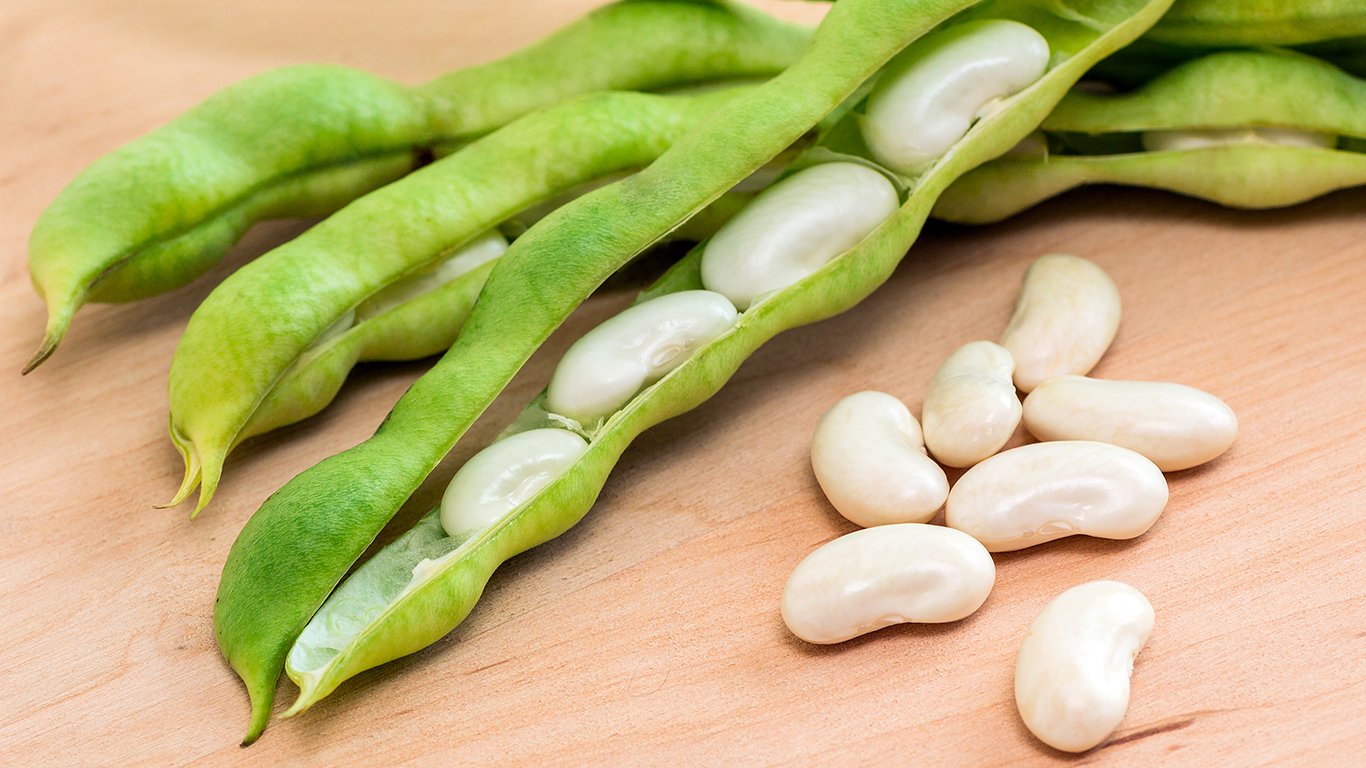
- Principal danger: Limarin
- Native to: Peru
When well-cooked, lima beans pose no danger because the heat destroys the cyanide enzymes. But when they are raw, these legumes, also known as butter beans, contain linamarin, which turns into cyanide when consumed. Even a small dose can be fatal.
Undercooked red kidney beans
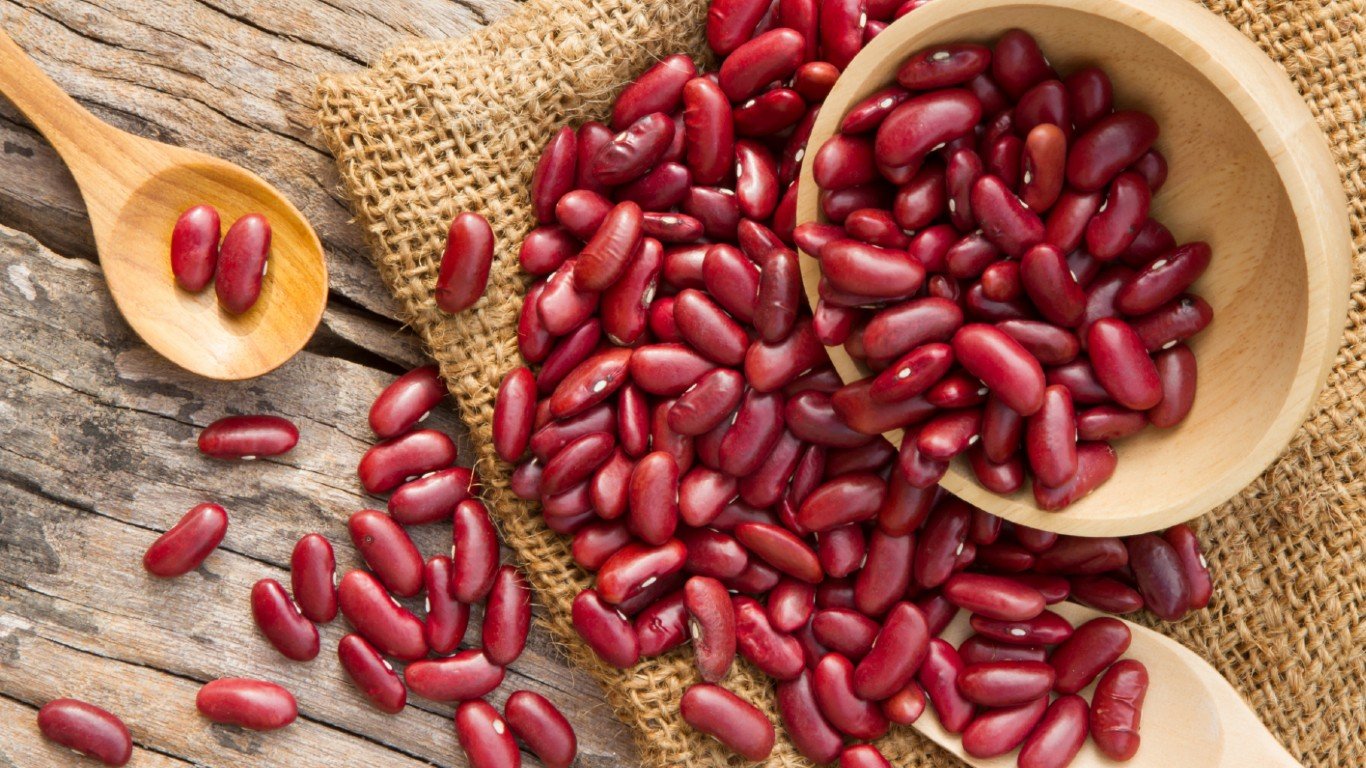
- Principal danger: Phytohaemagglutinin
- Native to: Peru and Central America
It is imperative to soak and thoroughly cook red kidney beans because, like many raw beans, they contain phytohaemagglutinin, a lectin that can cause severe gastrointestinal symptoms within just a few hours of consumption.
Unpasteurized dairy products
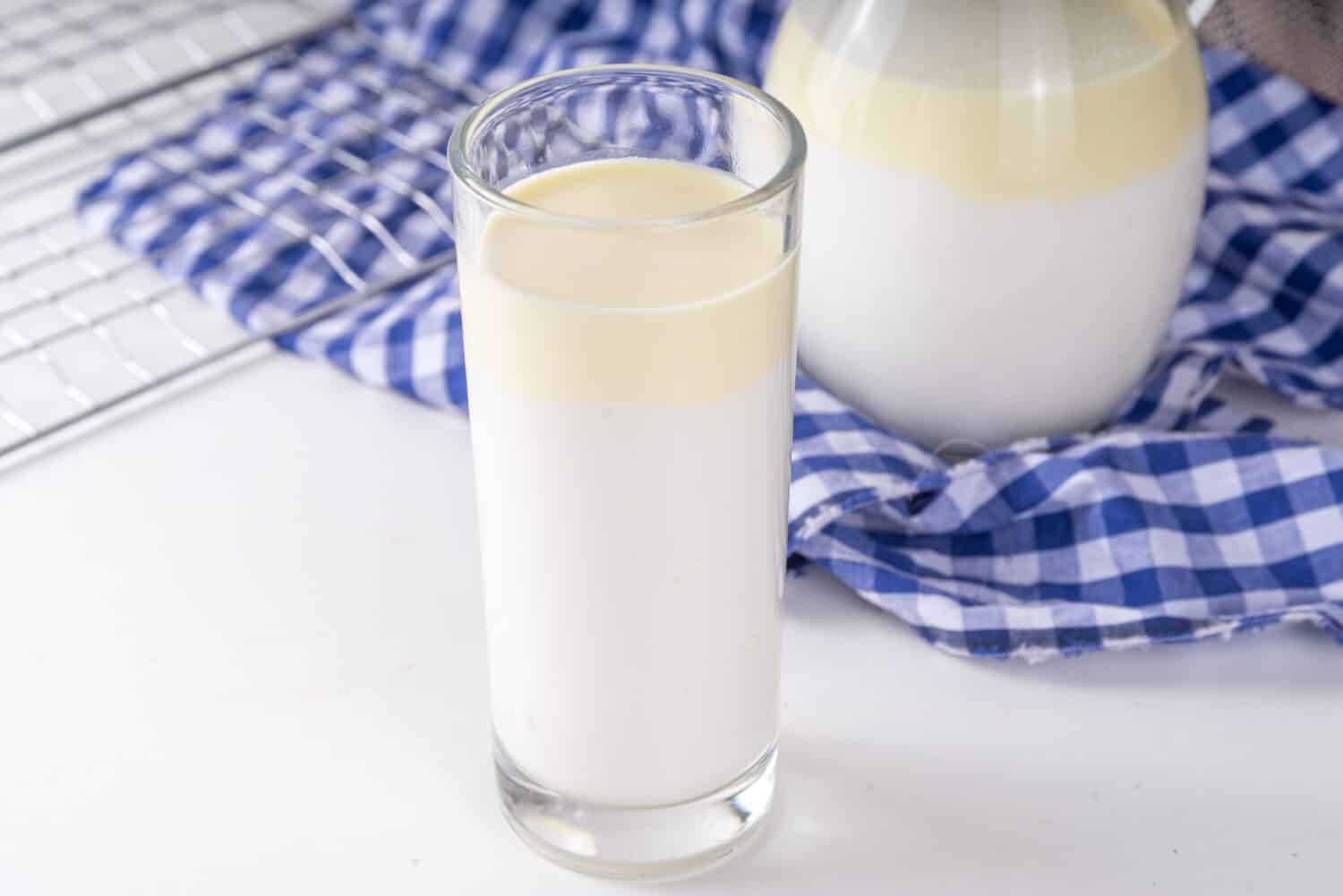
- Principal danger: Listeria, salmonella, E. coli
- Native to: many African tribes, but consumed worldwide
It doesn’t matter what the milk source is – cow, sheep, or goat – but unpasteurized milk and other dairy products may be full of Listeria monocytogenes and other bacteria that can cause food poisoning. The heating process called pasteurization – after French chemist and microbiologist Louis Pasteur, who invented it in 1864 – kills the bacteria, making the treated milk safe.
